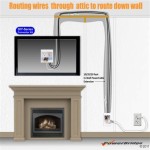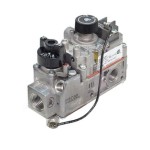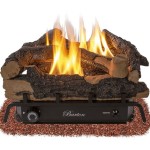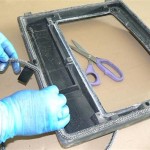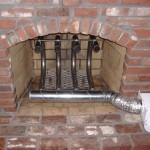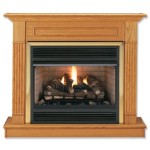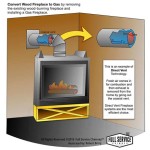Interior Brick Fireplace Paint: A Comprehensive Guide
Interior brick fireplaces serve as focal points within living spaces, offering warmth and aesthetic appeal. Over time, however, the appearance of a brick fireplace may become dated or undesirable, prompting homeowners to consider painting as a solution. Painting a brick fireplace involves careful preparation, selection of appropriate materials, and meticulous application to ensure a long-lasting and visually pleasing result.
This article provides a comprehensive guide to painting an interior brick fireplace, covering essential aspects from surface preparation to paint selection and application techniques. By understanding the nuances of the process, homeowners can effectively transform their fireplace and revitalize their living spaces.
Key Point 1: Preparation is Paramount
Effective preparation constitutes the foundation for a successful brick fireplace painting project. Neglecting proper preparation can lead to paint adhesion issues, uneven finishes, and ultimately, a less than satisfactory outcome. The preparation process involves several crucial steps, each designed to ensure the brick surface is clean, sound, and receptive to the paint application.
Cleaning the Brick: The initial step involves thoroughly cleaning the brick surface. Over time, brick can accumulate soot, dust, grease, and other contaminants that can hinder paint adhesion. A combination of methods may be necessary to effectively remove these impurities. Start by dry brushing the brick with a stiff-bristled brush to remove loose debris. Following this, use a vacuum cleaner with a brush attachment to extract any remaining dust particles from the brick's porous surface. For more stubborn stains or soot buildup, a specialized brick cleaner or a solution of trisodium phosphate (TSP) and water may be required. Always follow the manufacturer's instructions when using these cleaning agents, and ensure adequate ventilation. After cleaning, thoroughly rinse the brick with clean water to remove any residual cleaning solution.
Repairing Damaged Brick and Mortar: Examine the brick fireplace for any signs of damage, such as cracks, chips, or crumbling mortar. Addressing these issues prior to painting is essential for both aesthetic and structural reasons. Small cracks in the brick can be filled with a masonry crack filler. For larger cracks or chips, a patching compound specifically designed for brick repair may be necessary. Crumbling mortar should be removed and replaced using a mortar mix designed for masonry repairs. Ensure that the repair materials are compatible with the existing brick and mortar, and follow the manufacturer's instructions for application and curing. Allow the repairs to fully cure before proceeding with the painting process.
Taping and Protecting Surrounding Areas: Before commencing the painting process, it is crucial to protect surrounding areas from paint splatters and drips. Use painter's tape to mask off any areas that you do not want to be painted, such as the mantel, hearth, and adjacent walls. Cover the floor around the fireplace with drop cloths to prevent paint from staining the flooring material. Taking these precautions will save time and effort in cleanup later on.
Addressing Efflorescence: Efflorescence, a white, powdery deposit on the surface of the brick, is caused by soluble salts migrating to the surface and crystallizing. This condition must be addressed before painting, as the paint will not adhere properly to the affected areas. Scrape off the efflorescence with a wire brush. If the efflorescence is persistent, it may be necessary to treat the brick with a specialized efflorescence cleaner. After cleaning, allow the brick to dry completely before proceeding with the painting process.
Key Point 2: Selecting the Right Paint and Primer
Choosing the appropriate paint and primer is critical for achieving a durable and visually appealing finish on a brick fireplace. The type of paint and primer selected will influence the paint's adhesion, durability, and overall aesthetics. Consider the fireplace's intended use and the desired aesthetic when making these selections.
Primer Selection: A primer serves as a crucial bonding layer between the brick surface and the paint. It helps to seal the porous brick, providing a uniform surface for the paint to adhere to. For brick fireplaces, an alkali-resistant primer is recommended. Alkali resistance is important because brick is naturally alkaline, and the alkalinity can interfere with the paint's adhesion. Latex primers are generally a safe choice, but specific masonry primers designed for high-pH environments are even better. Always follow the manufacturer's instructions for application and drying times. Ensure that the primer is fully dry before applying the topcoat of paint.
Paint Selection: The choice of paint for a brick fireplace depends on several factors, including the desired aesthetic, the fireplace's functionality (whether it is a working fireplace or decorative), and the level of durability required. Latex acrylic paints are a popular choice for their durability, ease of application, and clean-up. They also offer good color retention and resistance to cracking and peeling. High-heat paints are designed to withstand high temperatures and are specifically formulated for use on surfaces that are exposed to heat, such as the firebox of a working fireplace. Select a paint with a matte or eggshell finish for a more traditional look, or a semi-gloss or gloss finish for a more modern and reflective appearance.
Tinting the Primer: Consider tinting the primer to a similar shade as the topcoat of paint. This can help to improve the paint's coverage and reduce the number of coats required, particularly when using a lighter color paint over a dark brick surface. Consult with a paint professional to determine the appropriate tint for the primer.
Testing the Paint: Before committing to painting the entire fireplace, it is advisable to test the paint on a small, inconspicuous area of the brick. This will allow you to assess the paint's color, adhesion, and overall appearance on the brick surface. Allow the test area to dry completely before evaluating the results. If you are not satisfied with the results, consider trying a different type of paint or primer.
Key Point 3: Application Techniques for Optimal Results
The application of paint to a brick fireplace requires careful attention to detail and the use of appropriate techniques to achieve a smooth, even, and durable finish. Utilizing the correct tools and methods is essential for maximizing the paint's performance and enhancing the overall appearance of the fireplace.
Brush and Roller Selection: Choosing the right brush and roller is crucial for achieving a professional-looking paint job on a brick fireplace. A high-quality brush with synthetic bristles is recommended for applying paint to the brick's textured surface. The brush's bristles should be durable and flexible, allowing the paint to be applied evenly into the mortar joints and crevices. A roller with a nap length appropriate for textured surfaces is also recommended. A roller with a longer nap will be able to reach into the crevices of the brick more effectively than a roller with a shorter nap.
Applying the Primer: Apply the primer to the brick surface using a brush and roller. Start by brushing the primer into the mortar joints and crevices, ensuring that the primer is evenly distributed. Then, use the roller to apply the primer to the flat surfaces of the brick. Overlap the brush and roller strokes to ensure complete coverage. Allow the primer to dry completely according to the manufacturer's instructions before proceeding with the paint application.
Applying the Paint: Apply the paint to the primed brick surface using the same techniques as with the primer. Start by brushing the paint into the mortar joints and crevices, followed by rolling the paint onto the flat surfaces of the brick. Apply the paint in thin, even coats, allowing each coat to dry completely before applying the next. Avoid applying too much paint in a single coat, as this can lead to drips and runs. Two or three thin coats of paint are typically recommended for achieving optimal coverage and durability.
Back Brushing: Back brushing is a technique used to smooth out the paint and eliminate any roller marks. After applying the paint with the roller, immediately go back over the painted surface with a brush, using long, even strokes to blend the paint together. This technique will help to create a more uniform and professional-looking finish.
Addressing Paint Drips and Runs: Inspect the painted surface for any paint drips or runs. If you find any, immediately brush them out using a clean brush. If the paint has already dried, you may need to sand the affected area smooth before applying another coat of paint.
Curing Time: Allow the paint to fully cure according to the manufacturer's instructions before using the fireplace. Curing time can vary depending on the type of paint and the environmental conditions. Rushing the curing process can compromise the paint's durability and longevity.
Painting an interior brick fireplace is a project that requires careful planning, preparation, and execution. By following the steps outlined in this article, homeowners can successfully transform their fireplace and create a more visually appealing and inviting living space. Remember to prioritize safety and always wear appropriate protective gear, such as gloves and eye protection, when working with paints and cleaning solutions.

7 Beautiful Ideas For Painting Interior Brick Fireplaces

Why People Are Painting Interior Brick Fireplaces Sheldon Sons Inc

How To Paint Your Brick Fireplace Katie Lamb

How To Paint A Brick Fireplace Beamin Moore

How To Paint A Brick Fireplace And The Best Use Craftivity Designs

How To Paint A Brick Fireplace Young House Love

Brick Anew Fireplace Painting The Stunning Natural Look

How To Prep Brick Fireplace For Painting Et Painters
How To Update A Brick Fireplace With Chalk Paint Diy Beautify Creating Beauty At Home

How To Update A Brick Fireplace With Chalk Paint Diy Beautify Creating Beauty At Home

